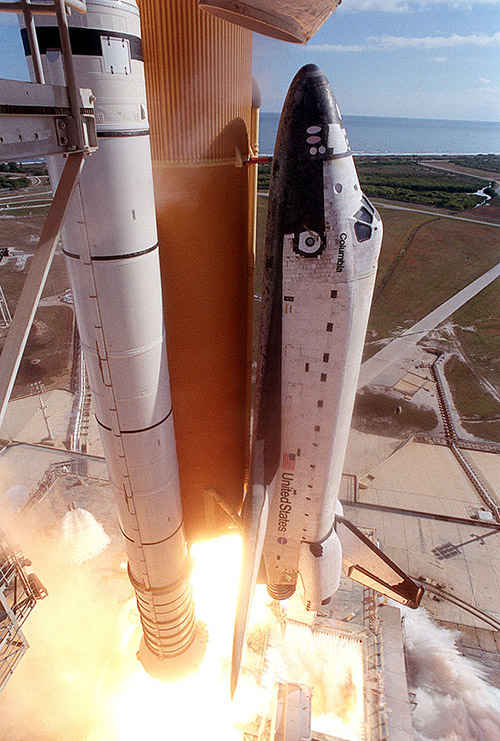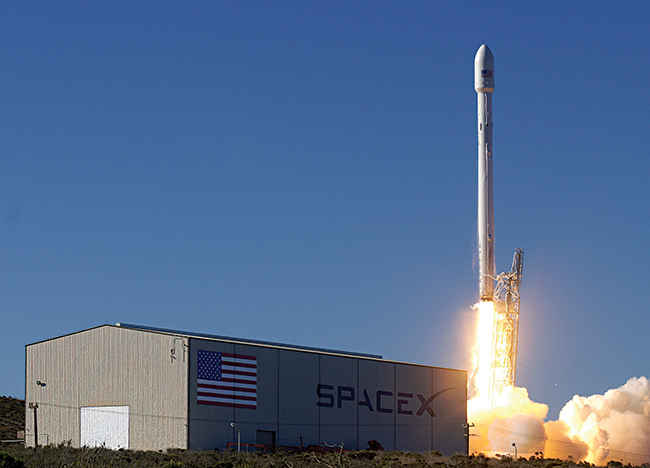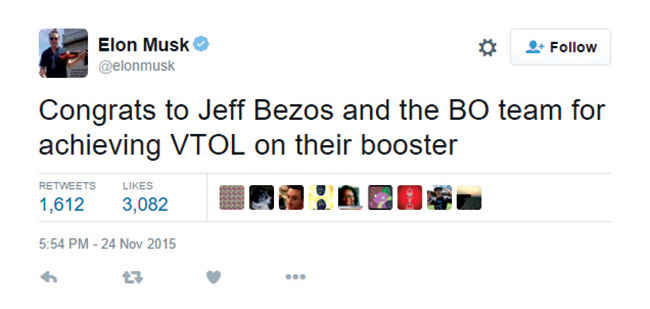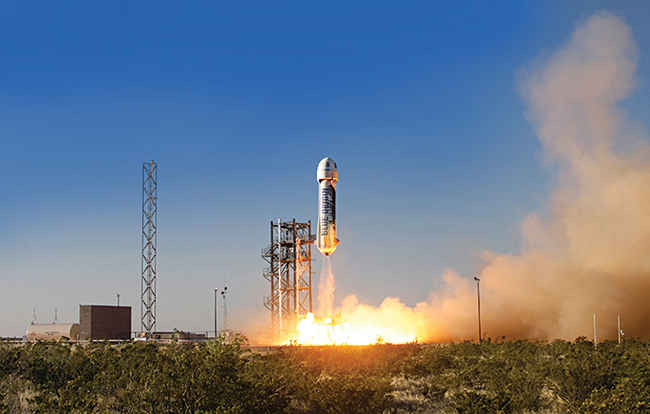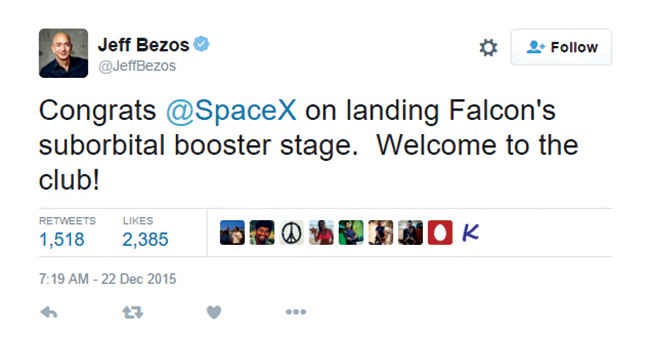Who will win the space race?
With so many players entering the fray, find out how today’s space race is shaping the present and the future of space exploration

You’re going to be thoroughly spoilt for choices when planning a holiday a century from now. You will still be able to go to the Grand Canyon or the Great Barrier Reef, but you will have to weigh those options against taking a weekend flight to the Moon and back. On the Moon you could take a tour of historic landing sites, check out artefacts, visit planned outposts, take a dune buggy ride across the dusty plains, and click a selfie with the Earth in the background (sadly, yes, selfies will still be around). You could also pop in to visit the astronauts on the space station on your way back, before finally riding a rollercoaster-like descent vehicle back into the atmosphere for kicks.
 Survey
SurveyToday, we’re already taking baby steps towards realising this seemingly fantastic vision. Space is finally opening up to someone other than governments, and that’s a good thing. Private companies need to make a profit in the end, and that means a rush to improve technologies and reduce costs. Unlike government aided space programs, the private industry needs to see a clear path to profitability, and every dollar spent is duly accounted for by shareholders.
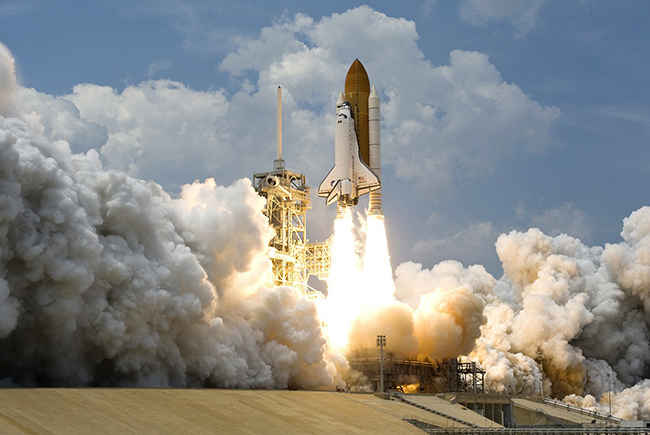
Rocket engines today are almost exactly what they were during the Cold War. And the monopoly of a few entities manning the gateway to space has to be broken. ULA, America’s leading rocket launch service provider, charges over $225 million per launch, as stated on their website. A more recent launch, which we shall look at in a bit, cost just one-fifth of this, at $54 million. It’s not just private companies aiding in this reduction of prices, it’s also a more global push for space by more governments. India, as you all remember, recently led the cheapest successful mission to Mars, ever.
However, it’s a bunch of pioneers with keen business acumen that will really make space more accessible to everyone.
What is Space?
Talking about exploring space conjures up images of people in rockets and spaceships, flying off to visit planets. Very Star Trek- and Star Wars-ish. However, where does space really start? Nowhere specific, to be honest because the atmosphere doesn’t abruptly stop existing, it just gradually thins out into vacuum. So we can’t really use the amount of molecules per given volume, but we can use temperature. As you go higher, temperature goes down. Anyone who’s been in an aeroplane knows that it’s ridiculously cold outside, but pretty warm inside thanks to the air pressure. But what temperature should we choose? So how do we go about deciding where space starts?
The Kármán line, named after Theodore von Kármán, who calculated that if you were in an aircraft, and kept going higher, at one point you’d have to be going exactly at orbital velocity to get the required lift to go any higher. Orbital velocity is the point at which the attraction of gravity and inertia of a body to move out in a straight line instead of following the Earth’s curvature balance out, and you achieve a stable orbit. This point is about 100 km above the surface of the Earth. So if you’re flying below the Kármán line you’re a mere pilot, and above, you’re an astronaut (or cosmonaut).
Space tourism
Obviously, when people are talking about space tourism, they’re talking about taking people above the Kármán line, and obviously, bringing them back. Anyone who’s seen videos of the Challenger disaster and then the later Columbia one (1986 and 2003 respectively), know that space is not a game. It’s dangerous business. It’s hard enough to go to space, but coming back to Earth is just as risky.
While Challenger broke up during take off, Columbia broke up during re-entry, underscoring the very real and dangerous risks of spaceflight. A lot of us in India remember the Columbia disaster, not only because it is more recent, but because amongst the people killed was Kalpana Chawla, who was the first woman of Indian origin in space.
Columbia during the take off
Any craft that enters the atmosphere from space has to penetrate it at precisely the right angle. Otherwise, it might just bounce off the atmosphere or break up. Furthermore, as the capsule carrying humans enters the atmosphere, it is in free fall, accelerating tremendously. The sheer velocity of the entering craft is so fast that the air molecules can’t move away in time, and this causes such high pressures, that the air is turned into plasma (the fourth state of matter). Space craft have heat shields to keep the colossal amounts of heat from getting into the craft. A part of the heat-shield failed for the Columbia, and it’s sad that they were literally vaporised!
However, that disaster made us more careful, and all the buzz these days is about the rockets that will carry us into space. There just aren’t enough things going up into space, because there aren’t enough affordable rockets, and there aren’t enough affordable rockets because there aren’t enough things going up into space.
Private vs. Government
For decades, space exploration and research was in the hands of governments the world over due to the prohibitive costs for going into any mission – in the range of billions of dollars.Businesses are not run by incurring huge costs, coupled with tremendous risks, and no real business model of returns. That’s not something any shareholder of a private company is going to give a go ahead to. Countries, on the other hand, are run by politicians, who have very different agendas, and are willing to loosen the purse strings for non-monetary gain, such as national pride, and winning the Cold War, for example. This is why countries push the frontiers, and companies make it cheap and profitable once all the risks are known.
Today, Low Earth Orbit space travel has known risks, and that’s why private companies are needed to take the baton over from countries, to do what they do best – compete, find ways to bring down costs, and invent new business models. While countries push the frontiers even further, it’s up to the private companies to make the known frontiers more efficient. Why wouldn’t NASA or ISRO use a private company to launch their satellites or payloads when a private company can do it at half their cost? Since the biggest clients for private companies will be the government programs themselves, we’re at a point where they will all work in a symbiotic relationship.
The new entrants
Every private space launch company out there is aiming to bring launch costs down for rockets. The most well-known name is obviously Elon Musk’s SpaceX, which has set the ultimate goal for themselves of colonising Mars. SpaceX has set all kinds of records: their Dragon was the first private craft to launch, orbit, dock with the ISS, and be recovered; Falcon 1 was the first private rocket to launch into orbit; Grasshopper was the first technology demonstrator to take off vertically and land vertically (VTVL) from a short height, and the mighty Falcon 9, the first private rocket to attempt a vertical landing after launching into space, failing soft landing thrice before finally succeeding this month.
Launch of SpaceX Falcon 9 with Dragon capsule for re-supply missions
The other big name suddenly is Jeff Bezos’s Blue Origin. Taking the whole world by surprise, Bezos announced on Twitter — with a video, no less! — that the New Shepard rocket managed to achieve perfect Vertical Takeoff Vertical Landing (VTVL) after reaching outer space. New Shepard crossed the Kármán Line and reached outer space at 105 km.
Bezos’s announcement not only brought him a lot of attention, but also triggered a slew of defensive responses from Musk who chose to explain why Falcon 9 and New Shepard are not really comparable. Musk is right. Blue Origin’s New Shepard (NS), while impressive, is not exactly an equal competitor to SpaceX’s Falcon 9 (F9). Although these two are currently the hot favourites in any reusable rocket discussion, they are two very different projects. The instant you see images of F9 and NS side by side, you know they’re different. F9 is thin and long, while NS is short and stubby. F9 is meant for launching payloads into orbit around the Earth and to the ISS. NS is meant for suborbital flights, which means the flight will not complete a full orbit around Earth, and carrying a maximum of 4 people. In keeping in line with the purpose, the two rockets have very different designs. F9 is very thin and streamlined so as to prevent drag and exit the earth’s atmosphere easily to go into space. NS, on the other hand, has a thick sturdy, shorter body and is much wider in girth than the F9. Both the rockets attempt to land the first stage back. This is the stage that usually breaks away from the structure and falls back into the sea, as the rest of the components (second stage and higher) proceed further into their journey.
It’s all progress anyway right Mr. Musk?
The height and velocity at which the stage breaks away for each rocket are also important factors to be taken into consideration. At nearly 200 km, F9 goes twice as high as NS does before the first stage separates and begins descent. Also, since F9 aims to get to orbital velocity, its velocity at approximately 9000 kmph is thrice as high during separation as the SN’s 3000 kmph. This, in addition to different orientation as well. The Falcon 9 turns parallel to the Earth’s surface during first stage separation, while NS remains vertical, the way it took off.
All of this is important because each private company has different targets and as a whole are bringing space travel closer to the common man. Apart from these two, there are also other names. The third biggest is probably Richard Branson’s Virgin Galactic. The SpaceShipTwo is a “spaceplane” that can fly both in air and space, and gets launched after being carried up to a specific altitude. Virgin Galactic infamously has people with tickets waiting in line to get to space on the SpaceShipTwo, but hasn’t successfully managed to launch it into orbit safely. In fact, the breakup of a test craft in late 2014 causing the death of a pilot was a rude reminder to the world just how delicate and fragile spaceflight still is.
Blue Origin’s New Shepard suborbital system
Yet another name that crops up is XCOR, whose Horizontal Takeoff Horizontal Landing (HTHL) craft, much like SpaceShipTwo, is called Lynx and is scheduled to be tested sometime next year. The British company Reaction Engines Limited meanwhile has a similar plan for Skylon, funded by the British govt. Skylon is an ambitious craft that aims to take off and land on a runway like a regular aeroplane. Sierra Nevada’s Dream Chaser targets almost exactly the same mechanism. India’s space agency, ISRO, is looking to develop a shuttle program as well. There are other companies that are known for their satellite making prowess, like Orbital, that both makes and launches its own satellites in its own rockets.
All of them are ambitious with ground breaking designs that will bring about radical changes in the space sector in the process of transformation to space “industry”. All of the private companies in the space industry are trying to achieve one common goal: reusability.
Reusability
That’s the magic word, really. In any industry, reusability is always a key component in the manufacturing process. It lowers development costs, improves accuracy, and increases safety. Would you fly if every flight from Mumbai to New Delhi cost you Rs. 15 lakh. Then once you got there you saw them dump the plane in the ocean, before rebuilding a plane from scratch for the next flight home? This is exactly where rockets are today. The average cost of a rocket launch was somewhere between $200 million to $500 million. The now reusable Falcon 9, in December 2015, charged just $54 million, and this cost will go down with every reusable launch. This is why we feel that reusable rockets are more promising than HTHL experimental crafts at the moment.
Keep it classy Mr. Bezos!
Reusability comes at a much higher initial cost though. Still, since we’re not going to give up on space anytime soon, and we will need more and more satellites to enhance our communications and GPS over the decades, it’s not like that research will be in vain. Reusable components go a long way towards reducing the space debris floating around.
The future
Fifty years from now, you won’t just fly to space, you will get a choice of packages. You could just do a simple crossing of the Kármán line and coming back, or you could orbit the Earth a couple of times. A century from now we hope the scenario we painted in the beginning of this article will be achievable. Hopefully, SpaceX will realise their dream, and allow our great-grandkids to choose if they want to travel and settle on Mars or Venus! Maybe probes digging around on Jupiter’s and Saturn’s icy moons will report signs of life back to our descendants. It’s the only real frontier left, and the universe is unlimited
in sheer size comparison to us.
We’re going to have to get off this rock eventually to survive, and we are the generation that will be remembered throughout history as the ones who started and supported the first initial steps to achieving just that.
